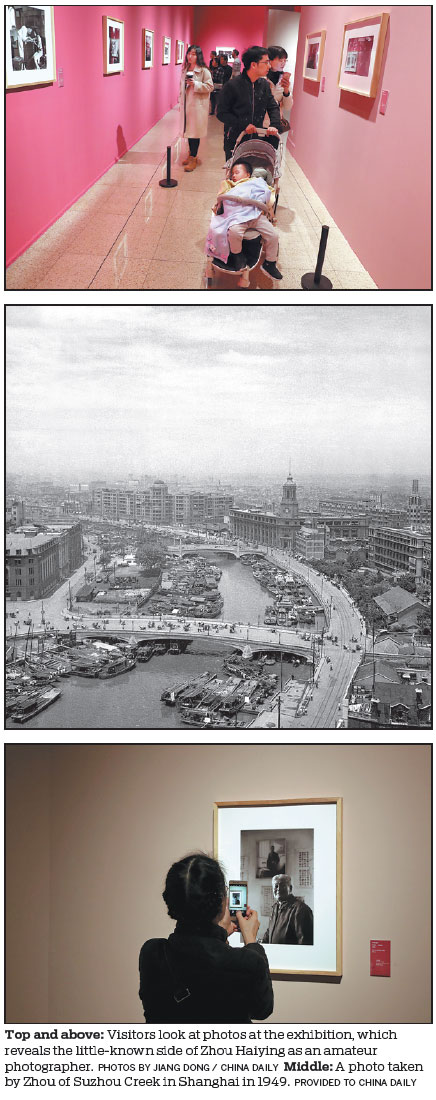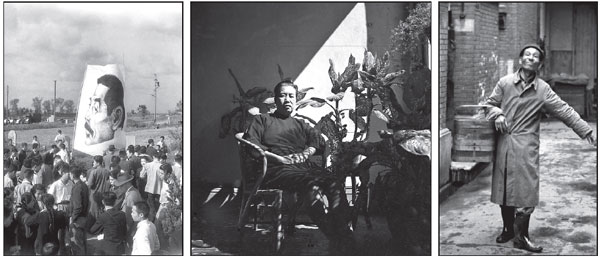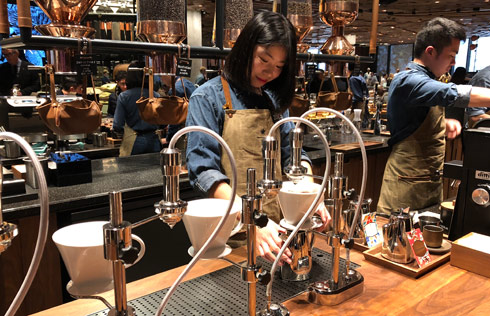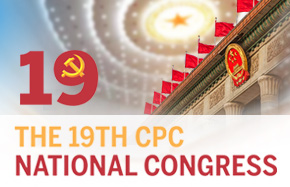Taking a moment
A current exhibition explores the amateur, yet historically significant, photographs of Zhou Haiying, son of eminent Chinese writer, Lu Xun, Lin Qi reports.
Throughout his life, Zhou Haiying (1929-2011) lived with both the honor and the pressure of being the only child of eminent writer, critic, translator and social activist of 20th-century China, Zhou Shuren (1881-1936), who is perhaps better known by his pen name, Lu Xun.
He once described it as growing up under the control of "a fame field", the extensive, prolonged influence of his father that grabbed him like a magnetic field.
Zhou Haiying was 7 years old when Lu Xun died in Shanghai. He did not receive much of an inheritance, but his father left an instruction for him in his will. It said, "If the child grows up obtaining no special ability, he can make a living from ordinary jobs. He must not try to be a literati or an artist, but with a false title."
Zhou Haiying followed his father's last wish to lead a life with discretion. A graduate of physics from Peking University, he dedicated himself to the development of radio science. He largely remained out of the limelight apart from attending activities honoring his father.
Because of Zhou Haiying's low-profile, people are often surprised to discover a little known side to his life - that of an amateur photographer. At least, that is, until they visit the photo exhibition, Moments of History, currently running at the National Art Museum of China in Beijing.
The exhibition, which will continue through March 17, navigates Zhou Haiying's exploration of photography since the age of 14, when he first learned the skill.
He produced tens of thousands of negatives in his lifetime, some of which capture the images of the Zhou family, while the rest reflect a wide spectrum of society - portraying noted public figures, poor people, playful children, chic young people and old men maintaining their traditional way of life.
He zoomed in on picturesque countryside landscapes, the metropolitan life of Shanghai and historic scenes such as the People's Liberation Army entering Beijing in 1949.
His oeuvre of snapshots, mostly in black and white, provides historic details from both an individual and a collective perspective.
He said, "I find a pleasure in my own photography. Unconsciously, I've frozen moments of time for my family and others.
"I do not photograph for 'novelty hunting'. I only hope my snapshots can be a witness to current events."
For several decades after he first took up photography, Zhou Haiying never published any of his pictures. This was because he viewed his interest in photography as a personal thing and not as a profession. He said that he did once consider becoming a career photographer, but eventually, he chose radio technology as his job.
It was not until 2008 that his first photo exhibition was launched in Shanghai, a gift from his family to celebrate his upcoming 80th birthday.
Wu Weishan, the director of the National Art Museum of China and a family friend, recalls that, at the time, Zhou Haiying worried if his photos "were worthy of a public viewing, and whether or not they would disgrace his father's reputation". In the end, his fears were unfounded, because his debut was well-received.
Zhou Haiying's photos are candid, capturing moments when people are relaxed and naturally going about their daily routine, instead of being posed or prepared. His work, imbued with empathy and a sense of humor, evokes in the viewer a touch of warmth.
"He was against taking staged photos. He wanted real things," says Zhou Lingfei, his eldest son and president of Lu Xun Culture Foundation.
"He didn't photograph people who sat there waiting for the photo to be taken. Rather he would wait until people moved, then picture them going about their business. He liked that feeling."
One portrait on show, taken by Zhou Haiying in 1949, depicts a street vendor selling prepared food in an alley of Shanghai. As he was framing the shot, the man walked toward the camera in a lighthearted manner and with a triumphant grin. It is reminiscent of French photographer Henri Cartier-Bresson's iconic photo taken in 1954, Rue Mouffetard, Paris, in which a boy is pictured carrying two bottles with the same exuberance.
Zhou Haiying attributed his concern for the commoner, their joy and agony, to Lu Xun - who expressed similar feelings in his writing. "His care for those at the bottom of society ... exerted a deep influence on me. It was my father who taught me how to take photos."
Being the son of Lu Xun allowed Zhou Haiying frequent contact with many social and cultural figures. He also took portraits of them. His pictures, like the work of 17th-century Dutch painter, Rembrandt, have a similar approach to reinforcing the contrast between light and shadow. His lens retains a stillness of time, bringing those historic figures back to life which, in return, adds levels of depth to his work.
Zhou Haiying's given name, literally meaning "infant of Shanghai", marks the city in which he was raised, although he moved to Beijing to attend university and remained in the capital until his death in 2011. Some of his photos provide a snapshot of similarities and distinctions between the two cities - both in landscape and people's livelihoods - in the 1940s and 1950s.
The exhibition includes two wedding photos he took, one in Shanghai and one in Beijing, in 1950.
The former shows a middle-class wedding taking place at a church decorated with a lot of floral bouquets. The bride and groom, dressed in Western-style outfits, walk down the aisle, watched by a crowd of guests.
Conversely, the latter shows a newlywed couple standing in a traditional siheyuan courtyard of Beijing. Their clothes are austere and of the same style, and they were both pictured wearing a big flower on their chest.
Zhou Lingfei recalls that when his father neared 80, he wanted to buy a digital camera.
"I said a digital camera was too heavy to carry around for a man of his age, let alone changing lenses and that sort of thing, but he insisted, saying photography was the love of his life.
"Father said one should develop an interest in one thing, take it seriously, and stick to it throughout one's lifetime. I miss him."
Contact the writer at linqi@chinadaily.com.cn
|
From left: A gathering to mark the 10th anniversary of Chinese writer Lu Xun's death in Shanghai in 1946; Xu Guangping, Lu Xun's wife, in Hong Kong in 1948; and a street vendor in Shanghai in 1949. The photos taken by Lu Xun's son Zhou Haiying are part of an ongoing exhibition, Moments of History, at the National Art Museum of China in Beijing. Photos provided to China Daily |

(China Daily 03/05/2019 page15)



















